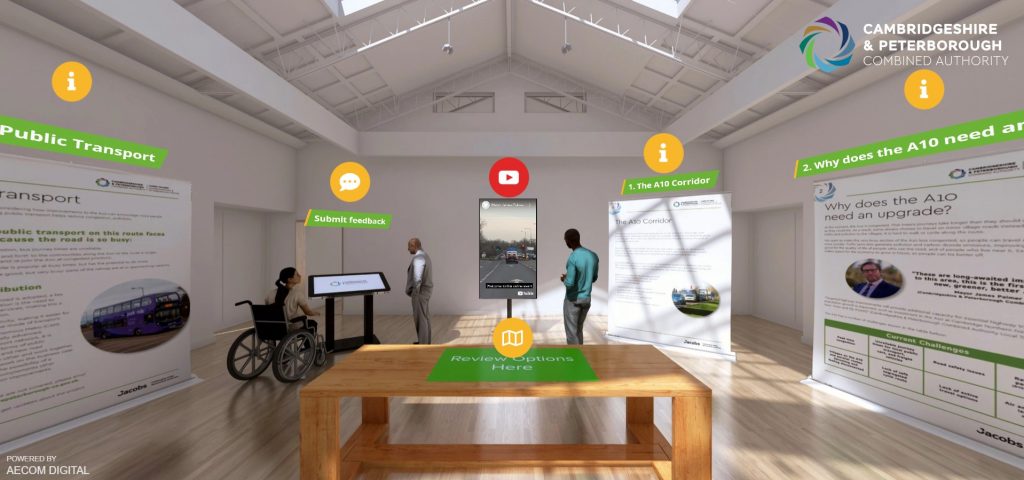
Mayor’s ‘road-trip’ shares A10 options with public despite Covid
Thanks to a ‘virtual road-trip’ which went live this week, people can have their say on the shortlist of options being considered to improve the Ely-Cambridge stretch of the A10, despite Covid-19 safeguards restricting public gatherings.
Although the public consultation demanded by statute will not be held until much later this year, Mayor James Palmer wants to hear people’s views as early as possible and he has set up an information event online to share the routes with people and invite their comments.
James Palmer, Mayor of Cambridgeshire & Peterborough:
“I’m keen to hear from the community as soon as I can. I want people to have time to weigh up the various A10 options, to decide which they think works best, and get their comments in early. I don’t want their chance to give opinions reduced by the Covid issue. So I asked the team to come up with a way we could inform people and invite their feedback while keeping them safe. And here it is – a virtual room with maps and details of the eight options.
“Every comment counts. We’re not committed to any options yet and I’m eager for lots of insights from the community to help inform not only the public consultation due later this year, but also the ultimate decisions about the greener, better A10 we want for our future.”
Eight shortlisted options have been picked following Department for Transport criteria. Each must improve the current A10 to benefit the communities who use it. All involve transformation to dual carriageway.
The environment is a key factor in A10 development, both in terms of the natural and built environments, and broadening scope for active travel. A greener A10 could be a major contributor towards Cambridgeshire’s Net Zero carbon target.
The longlist of possibilities was narrowed to the eight top options, which will be assessed against effect on traffic flow, junctions and other roads; positive and negative social, economic and environmental impacts, and value for money.
James Palmer, Mayor of Cambridgeshire & Peterborough:
“The ideal A10 needs to tick a lot of boxes, accommodating not only active travellers who are walking, cycling, or riding horses but also wide, slow-moving agricultural vehicles. We expect an increase in bus services, linking into a greener public transport system. A better and safer A10 needs to relieve pressure on rat-runs through the villages and help clean up air quality. It has a lot to deliver – but it’s a public highway and we need the public’s input to get it right.”
When Covid safeguards on gatherings do relax, the Combined Authority plans to hold community information and engagement walk-ins, but, until then, this virtual public event presents the key points to help people decide on the issues and options.
It remains open for three weeks, until 14th July 2020.
The A10 is a vital road within the Cambridgeshire & Peterborough region. The section that runs between Ely and Cambridge is part of the direct route between London, Cambridge, and King’s Lynn, and plugs into other primary routes. It is a key artery for connecting local communities with each other and to employment opportunities.
It is used by a wide variety of traffic, from local buses, cars, and caravans to long-distance freight and agricultural vehicles including tractors and combine harvesters.
Many of the key sectors of the region’s economy – including tourism, agriculture, manufacturing, technology, and retail – rely on the A10.
- March’s Broad Street Improvements Shortlisted For National Transport Award
- Independent review set for bus franchising in Cambridgeshire and Peterborough
- Cambridgeshire County Council and Peterborough City Council Local Highway Maintenance Transparency Reports Released
- Publication of draft statement of accounts 2024-2025
- Mayor of Cambridgeshire and Peterborough Paul Bristow Statement: UK Industrial Strategy
- Combined Authority Market Towns Fund supports expansion of Huntingdon’s Cromwell Museum

